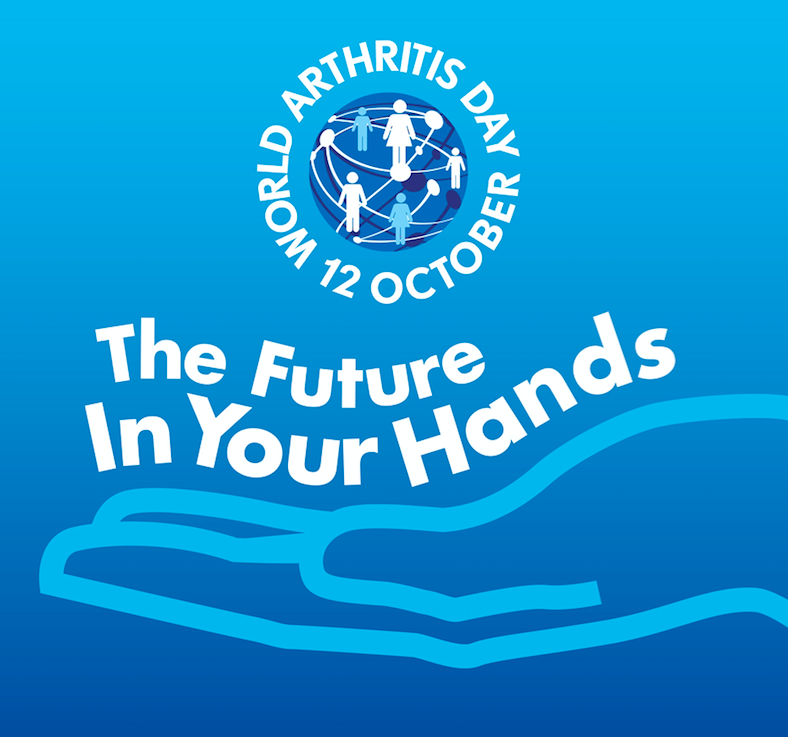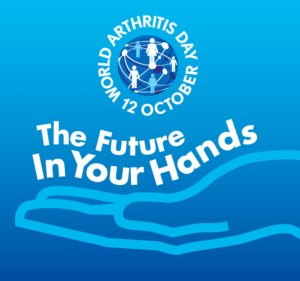
 My grandmother Belle suffered terribly from arthritis. Her swollen knuckles caused her pain and made it increasingly difficult for her to write, open mail or perform the simplest activities. While arthritis is the most common complaint of those over 65, it’s not inevitable.
My grandmother Belle suffered terribly from arthritis. Her swollen knuckles caused her pain and made it increasingly difficult for her to write, open mail or perform the simplest activities. While arthritis is the most common complaint of those over 65, it’s not inevitable.
Over 52 million Americans are living with some form of rheumatic or musculoskeletal disease (RMD.) The Arthritis Foundation is the leading non-profit organization dedicated to the prevention, control and cure of arthritis in the US.
In recognition of World Arthritis Day on October 12th, here is a brief review of the most common types of arthritis and the vital benefits of movement, particularly yoga.
Common Types Of Arthritis
Osteoarthritis is the most common non-inflammatory RMD. Considered a wear-and-tear disease, OA is generally localized at the site of the affected joint(s) causing pain and swelling. The most typically affected joints include the knees, hips, fingers, hands, neck, back and toes.
The most common inflammatory RMD is rheumatoid arthritis. An autoimmune disease, its effects are systemic and often require medication and medical supervision.
Maintaining joint movement is a crucial quality-of-life factor for those living with arthritis. There are many types of activities that can be beneficial. The Arthritis Foundation breaks down movement by category, recommending Group Fitness, Cardio and Strengthening.
The Case for Yoga and Arthritis
Yoga is listed under Group Fitness but it’s also possible to practice yoga 1:1 with a qualified teacher. In fact, if you’ve never been to a yoga class and have any health condition requiring modifications, taking a private session before attending a group class can be a good idea.
If a private session isn’t feasible, look for a group class designed to serve those with arthritis. In the US and Australia, the Yoga for Arthritis teacher directory is a good place to start.
Alternatively, a gentle hatha yoga class could be appropriate. Check with the teacher beforehand to ensure they have experience working with people who have RMDs.
Experienced teachers can often accommodate students practicing on mats, while some students remain seated in a chair. For uniformity, most classes are limited to either the mat or the chair. Whatever the format, it’s important to communicate with the instructor and express any needs or concerns. As always, check with your doctor before beginning any new exercise routine.
Exercise and More
Yoga has been proven to be particularly beneficial for those with RMDs because it helps reverse movement limitations by increasing flexibility and improving circulation.
Circulation is essential for healthy joints because it aids the delivery of synovial fluid – a kind of WD-40 for the body – to the joints. Synovial fluid helps lubricate, protect and maintain healthy cartilage and range of motion.
While asana practice may feel intimidating at first, it soon becomes an empowering experience, as practitioners feel more at home in their bodies. It also gives them a taste of the more subtle aspects of yoga including breathing, meditation, visualization and relaxation. These practices have long been documented to help reduce stress and inflammation which exacerbate arthritis.
Moving the body slowly with breath awareness is a powerful practice. The breath serves as a bridge between mind and body and allows those with RMDs to work carefully but effectively. Students build confidence and stability in class and that often translates into greater freedom and independence in their lives. I’ve witnessed many students over the years gain greater well-being, self confidence and joy.
Perhaps the sweetest benefit of group classes is the element of community. Many people feel isolated when diagnosed with a serious health condition. Making friends and sharing challenges is not only socially beneficial, it’s known to support immune function.
If you or someone you love is living with an RMD, check out the World Arthritis Day’s 2016 website for inspiring testimonials from people all over the world who’ve taken action to live their lives to the fullest with an RMD. Perhaps you’ll be motivated to share your own story there.
In the United States, the Arthritis Foundation has nationwide chapters offering activities, resources, a helpline and the latest research.
In January 2017, I’ll be delivering a Resilience for Life Stress Reduction Program at the Arthritis Foundation’s EXPO in Northern CA. Check our website for details as well as other upcoming events open to the public: https://www.resilienceforlife.com/events/